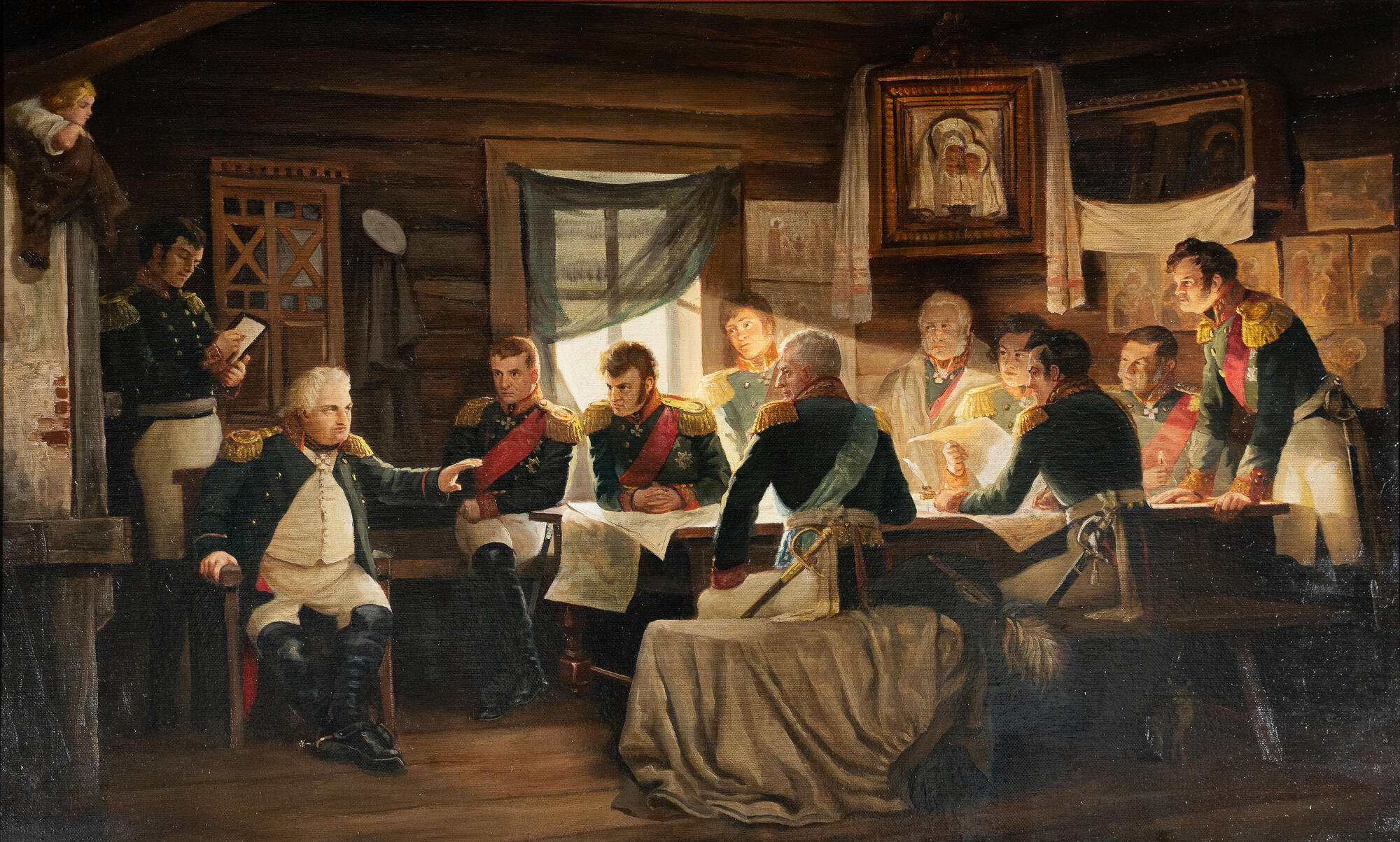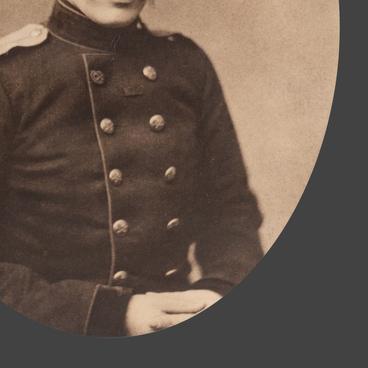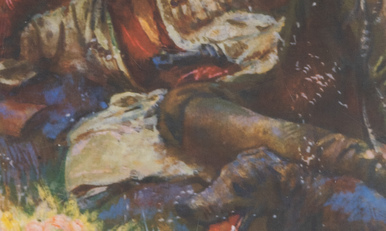The painting depicts an important episode of the Patriotic War of 1812. It was the end of the first stage of the war when under the onslaught of Napoleon, the army of Alexander I retreated from the borders of the Russian Empire. After the Battle of Borodino, in the early morning of September 1, Russian troops were positioned near Moscow, between the village of Fili and the Sparrow Hills, which was ill-suited for a grand battle.
In the evening of the same day, Commander-in-Chief Mikhail Kutuzov convened a military council in the house of the peasant Mikhail Frolov. Generals Barclay de Tolly, Leonty Bennigsen, Alexander Osterman-Tolstoy, Karl Tol, Nikolay Raevsky, Dmitry Dokhturov, Alexey Yermolov, Pyotr Konovnitsyn and Paisiy Kaysarov were invited. They faced the main question: to take on the French army here or surrender Moscow without a fight?
The generals’ opinions were divided. After listening to all those present, Mikhail Kutuzov stood up and said the words that became history:

